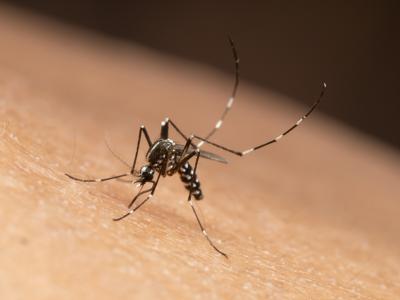Feb 24, 2012 (CIDRAP News) – Just why the US influenza season has been so tame thus far is uncertain, but the possible reasons include mild weather, vaccination, and high population immunity owing to a fairly stable set of circulating viruses, a Centers for Disease Control and Prevention (CDC) official said today.
The CDC announced 2 weeks ago that the flu season had officially begun, as measured by the percentage of positive tests on respiratory specimens. But today's CDC weekly flu update shows that US flu activity is still low as measured by the number of outpatient medical visits for influenza-like illness (ILI), and only one state reported high ILI activity last week.
"This is the latest start to the season in 29 years," said Joseph Bresee, MD, at a CDC press briefing today. He said all three flu subtypes are circulating in the United States, but H3N2 viruses have made up more than 70% of the isolates identified, and type B viruses have been very few.
Bresee said a combination of factors probably explains why the season has been late, mild, and dominated by H3N2.
"The timing of influenza and how severe it is each year is highly variable and hard to predict," he said. "One factor is that the viruses circulating this year are quite similar to the viruses last year, so possibly there is high immunity to the viruses in the population."
Also, he said. "We've seen vaccine coverage rates continue to trend upward, which should lead to less disease over time."
Another possible factor is that the population has high levels of antibodies to the 2009 pandemic H1N1 virus, thanks to widespread exposure during the pandemic, Bresee said.
In response to a question, he said the unusually mild winter may also be a factor: "We do know that in cold, less humid times, flu viruses remain more viable for longer, and in cold weather people tend to cluster inside more," where they can share infections.
Today's CDC update said 14.4% (614 of 4,269) respiratory specimens tested last week were positive for flu. Bresee said this is the third week in a row that the proportion has topped 10%, a level seen as a sign that the flu season is under way.
No flu-related deaths in children were reported last week, and the proportion of deaths attributed to pneumonia and influenza remained below the epidemic threshold. Only 1.9% of outpatient medical visits were ascribed to ILI, which is below the national baseline of 2.4%.
Missouri was the only state to report high ILI activity last week, while Alabama and South Dakota cited moderate activity, the CDC said. Six states reported low ILI activity, and the remaining 41 had "minimal" cases.
The geographic spread of actual flu cases presents a slightly different picture, according to the CDC. From that perspective, Colorado and California had widespread flu activity, 13 other states had regional activity, and 20 states had local activity.
"While most [flu] indicators are low, we expect them to increase in coming weeks," Bresee commented. He called this season's pattern "unusual but not unprecedented."
In the past 35 years, the flu season has peaked in March four times and in April twice, "so we can't predict the timing of activity nor when the season will end," he said. He added that those who haven't received a flu shot should still get one.
Bresee noted that the World Health Organization (WHO) announced this week that two of the three flu strains (H3N2 and B) in the Northern Hemisphere's flu vaccine should be changed for the 2012-13 season, a recommendation based on the viruses currently circulating globally.
Despite this, most of the viruses characterized in the United States this season have been well matched to the vaccine, he said. "Slightly below 50% of the B viruses identified in the United States this season have been similar to the component in the vaccine," but very few B viruses have circulated, he reported.
He also noted that the WHO mentioned the option of including two B strains in next season's vaccine, given the perennial difficulty of predicting which of the two B lineages—Victoria and Yamagata—will be more common. The WHO's main recommendation was to switch to a Yamagata-lineage vaccine for next season (B/Wisconsin/1/2010-like).
But the WHO said that if countries want to use a Victoria-lineage virus in a trivalent vaccine or cover both B lineages in a quadrivalent (four-strain) vaccine, they should use the same B strain as in this season's formula.
See also:
CDC weekly flu update
CDC questions and answers on vaccine selection
Feb 23 CIDRAP News story "WHO picks two new strains for next season's flu vaccine"





















